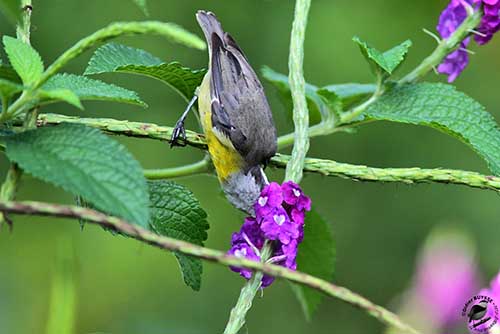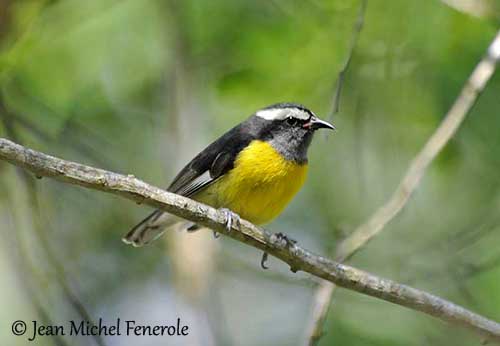
Fr : Sucrier à ventre jaune
Ang : Bananaquit
All : Zuckervogel
Esp : Platanero – Reinita (Puerto Rico)
Ita : Cereba gialla
Nd : Suikerdiefje
Sd : Banansmyg
Photographers:
Roger Ahlman
Pbase Galleries Peru and Ecuador
Didier Buysse
Vision d’Oiseaux
Jean Michel Fenerole
Photos d’Oiseaux du monde
Steve Garvie
RAINBIRDER Photo galleries
Jean-Claude Jamoulle
A la rencontre des Oiseaux
Philippe et Aline Wolfer
OISEAUX D’ARGENTINE
Text by Nicole Bouglouan
Sources :
HANDBOOK OF THE BIRDS OF THE WORLD Vol 16 by Josep del Hoyo- Andrew Elliot-David Christie – Lynx Edicions – ISBN: 9788496553781
A GUIDE TO THE BIRDS OF MEXICO AND NORTHERN CENTRAL AMERICA by Steve N. G. Howell, Sophie Webb - Oxford University Press - ISBN: 0198540124
A GUIDE TO THE BIRDS OF COLOMBIA by Steven L. Hilty and William L. Brown - Princeton University Press – ISBN 069108372X
BirdLife International (BirdLife International)
Neotropical Birds – Cornell Lab of Ornithology
Wikipedia, the free encyclopaedia
Animal Diversity Web (University of Michigan Museum of Zoology)
Bananaquit
Coereba flaveola
Passeriformes Order – Coerebidae Family
INTRODUCTION:
The Bananaquit is currently placed in its own family Coerebidae. Like the Yellow-faced Grassquit, it is part of a group including the Darwin’s Finches and several Caribbean genera, all being specialized tanagers. Most of them belong to the family Thraupidae.
This species exhibits considerable geographic variations with 41 recognized subspecies. Three clades are revealed by phylogenetic studies:
In addition, some species from the West Indies such as “aterrima” and “lowii” have a dark morph.
The Bananaquit is also named “Sugar Bird” referring to its attraction to sugar and nectar.

DESCRIPTION OF THE BIRD:
Biometrics:
Length: 10-11 cm
Weight: 6,5 – 14 g
The adult of nominate race has black upperparts except the yellow rump patch. On the upperwing, there is a conspicuous large white spot at primary bases. The tail is black.
On the underparts, chin and throat are blackish to slaty black, whereas the rest is bright yellow. The underwing is whitish.
The head is black with large, conspicuous supercilium.
The slender bill is black and slightly down-curved. The gape is red. The brush-like tongue is well-adapted to its feeding behaviour. The eyes are dark brown. Legs and feet are dark grey to blackish.
Both sexes are fairly similar, but the female is slightly paler.
The juvenile is paler and duller, with more yellowish supercilium and paler gape.
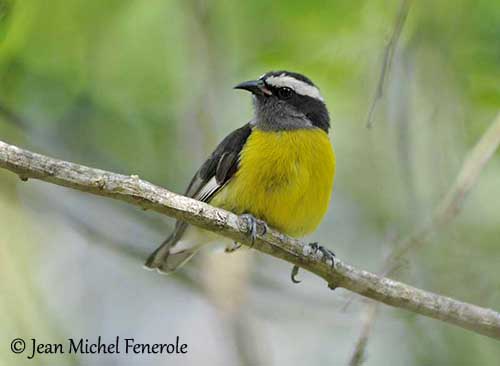
SUBSPECIES AND RANGE:
The Bananaquit has currently 41 recognized subspecies which differ in throat colour (white, grey or black), white wing spot visible or not, bill length and extent of yellow on the underparts. Some races have a dark morph.
This species has wide range from Caribbean and Mexico, S through Central America and South America to NE Argentina.
Seven subspecies are displayed on this page:
C.f. flaveola (described and displayed above) from Jamaica.
C.f. intermedia from SW Colombia, W Ecuador and N Peru, E to W Brazil and S Venezuela. This race has brighter yellow areas.
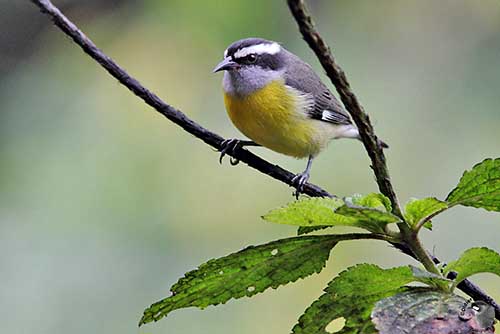
C.f. mexicana from SE Mexico, S to Caribbean slope to W Panama. This race has duller rump patch and greyish-olive back.
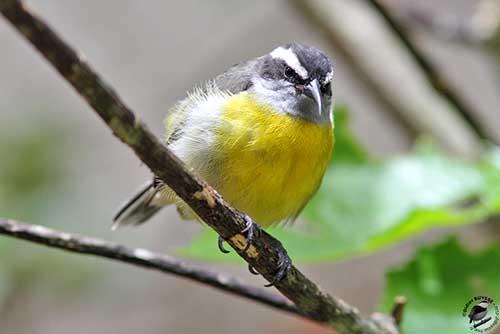
C.f. chloropyga from C Peru, S to C Bolivia, then E, across SC and E Brazil and S to E Paraguay, NE Argentina and extreme N Uruguay. This race lacks the white wing spot. It is greyish above and pale yellow below.
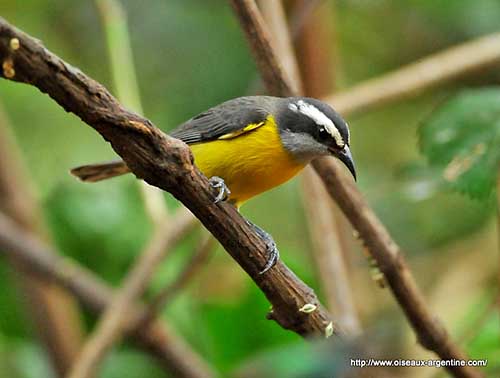
C.f. luteola from Colombia (Caribbean coast) and N Venezuela, Trinidad and Tobago. This one is blackish above with conspicuous white wing spot and white vent and undertail-coverts.
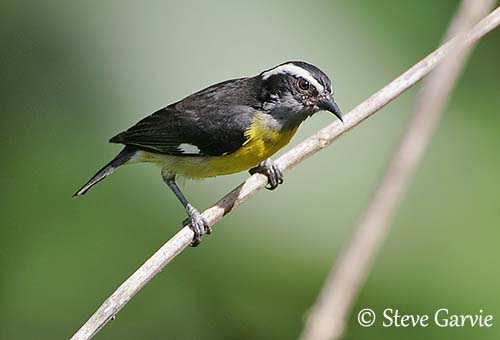
C.f. martinicana from Martinique and St Lucia. This race has long bill with red gape, broad white supercilium, and black side of head, chin and throat, with whitish central throat. The white wing spot is indistinct or absent.
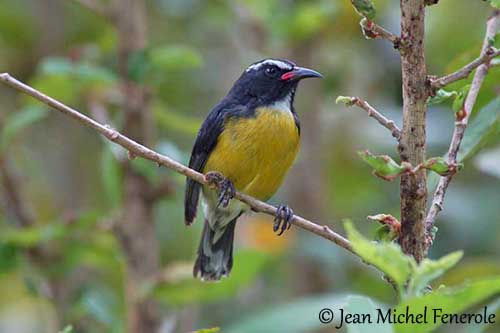
C.f. aterrima (dark morph) from Grenada Island and the Grenadines. The dark morph is sooty black with slight greenish-yellow wash below. It lacks the broad white supercilium and the white wing spot.
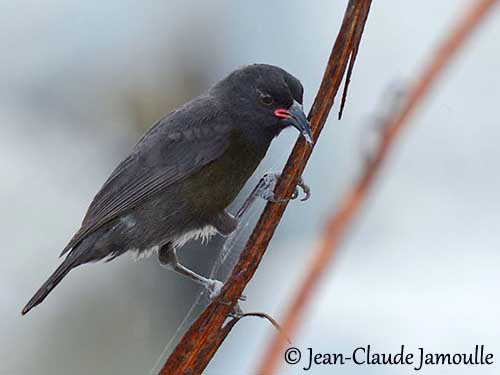
HABITAT:
The Bananaquit frequents various habitat types from scrubland to tropical lowland forest edges. Throughout the range, it can be found in plantations, scrubby woodland, second growth, gardens, shrubby areas and mangroves.
This species is scarce or absent in very arid areas or in areas of extensive humid forest.
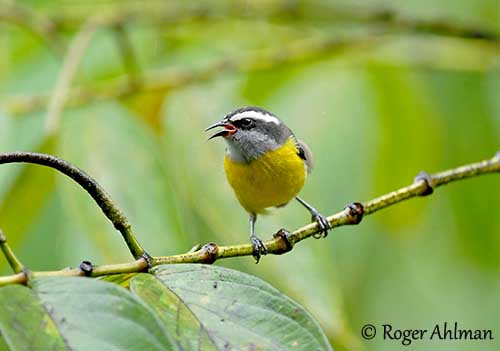
CALLS AND SONGS: SOUNDS BY XENO-CANTO
There are numerous geographical variations in song pattern within regions, and hundreds of regional dialects.
The Bananaquit’s song is a short, high-pitched series of hissing chips and buzzes often repeated. The calls are high-pitched, thin to buzzy twitters. It also gives a high, sharp “seiit” or “seeip”.
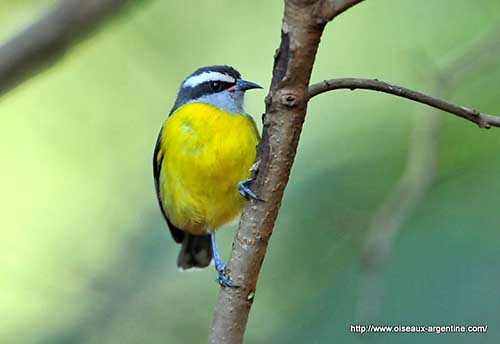
BEHAVIOUR IN THE WILD:
The Bananaquit can be seen alone, in pairs or in family groups, often around good food sources such as flowering trees and bushes.
This species feeds on small fruits and berries, some insects and spiders. But it feeds primarily on nectar, and especially from flowers visited by the Puerto Rican Emerald in Puerto Rico. It probes into flowers or robs the nectar by piercing the base of the tubular corollas. It often feeds upside down. It also frequents hummingbird’s feeders where it is usually dominant. Insects and spiders are gleaned from foliage, tree trunks and branches.
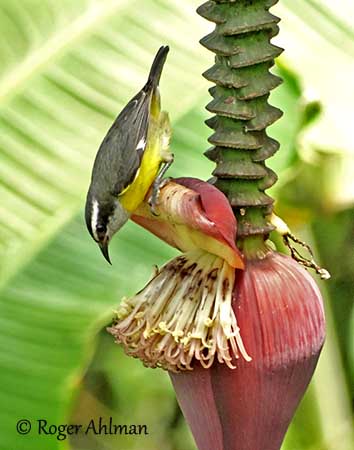
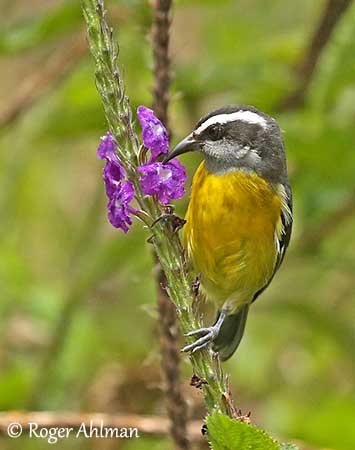
The Bananaquit is always very active while foraging. It feeds from base to tree canopy. It hops rapidly, probes for nectar with rapid movements before to move on quickly. It can be very tame and may take sugar from tables, even while guests are present. It also may join mixed-species flocks at food sources.
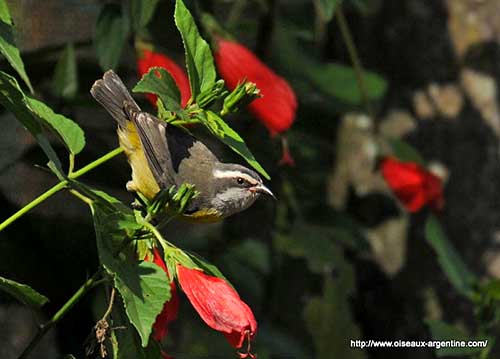
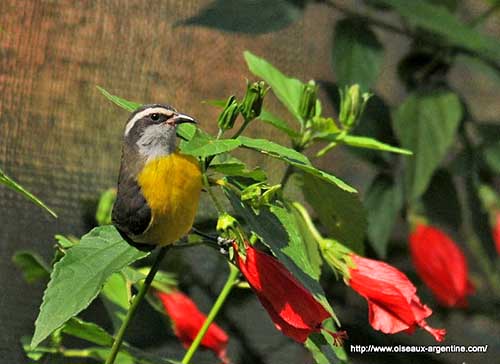
During the breeding season, the Bananaquit performs some displays. The birds bow while the yellow rump feathers are raised. Both mates may display with nest materials in the bill, bowing and hopping from branch to branch, in front of each other. These displays enhance the bright-coloured pattern of this species.
The Bananaquit is mostly resident. In most of range, this species is sedentary and defends a territory all year round. However, some populations may move locally according to flower abundance and food resources.
They often fly in mixed groups at tree tops.
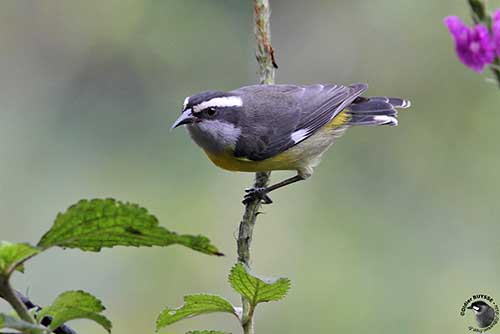
REPRODUCTION OF THIS SPECIES:
The breeding season varies depending on the range, but it is closely related with the onset of the rainy season. This period may vary according to the availability of food resources too.
The nest is a globular structure with a circular entrance hole. It is made with grass and vegetal fibres. The inner cup is lined with finer fibres or feathers. The nest is usually placed between 1,5 and 4 metres above the ground, and sometimes, but rarely, up to 15 metres. It is often at the end of a branch in tree or shrub, or vine tangle. It can be reused for nesting or roosting.
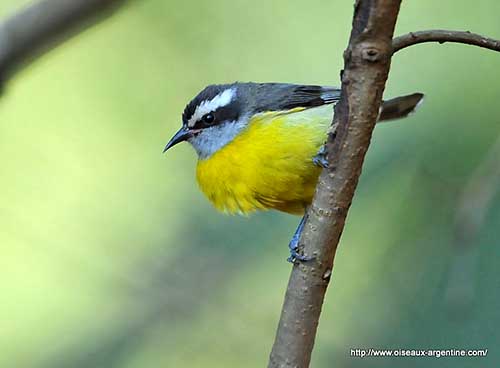
The female lays 2-4 whitish eggs with brown markings. She incubates alone during 12-13 days. The chicks are fed by both parents and mainly on insects. They fledge 17-19 days after hatching. This species produces two broods, sometimes more according to the range and the food resources.
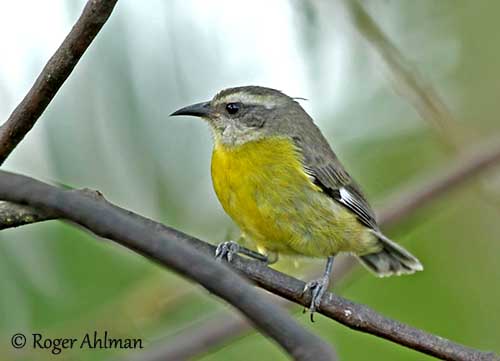
C.f. intermedia
Juvenile
PROTECTION / THREATS / STATUS:
The Bananaquit is uncommon to abundant, depending on the habitat. It is usually common in gardens and areas where it can find flowers and flowering trees. This species has stable populations and currently, the Bananaquit is evaluated as Least Concern.
